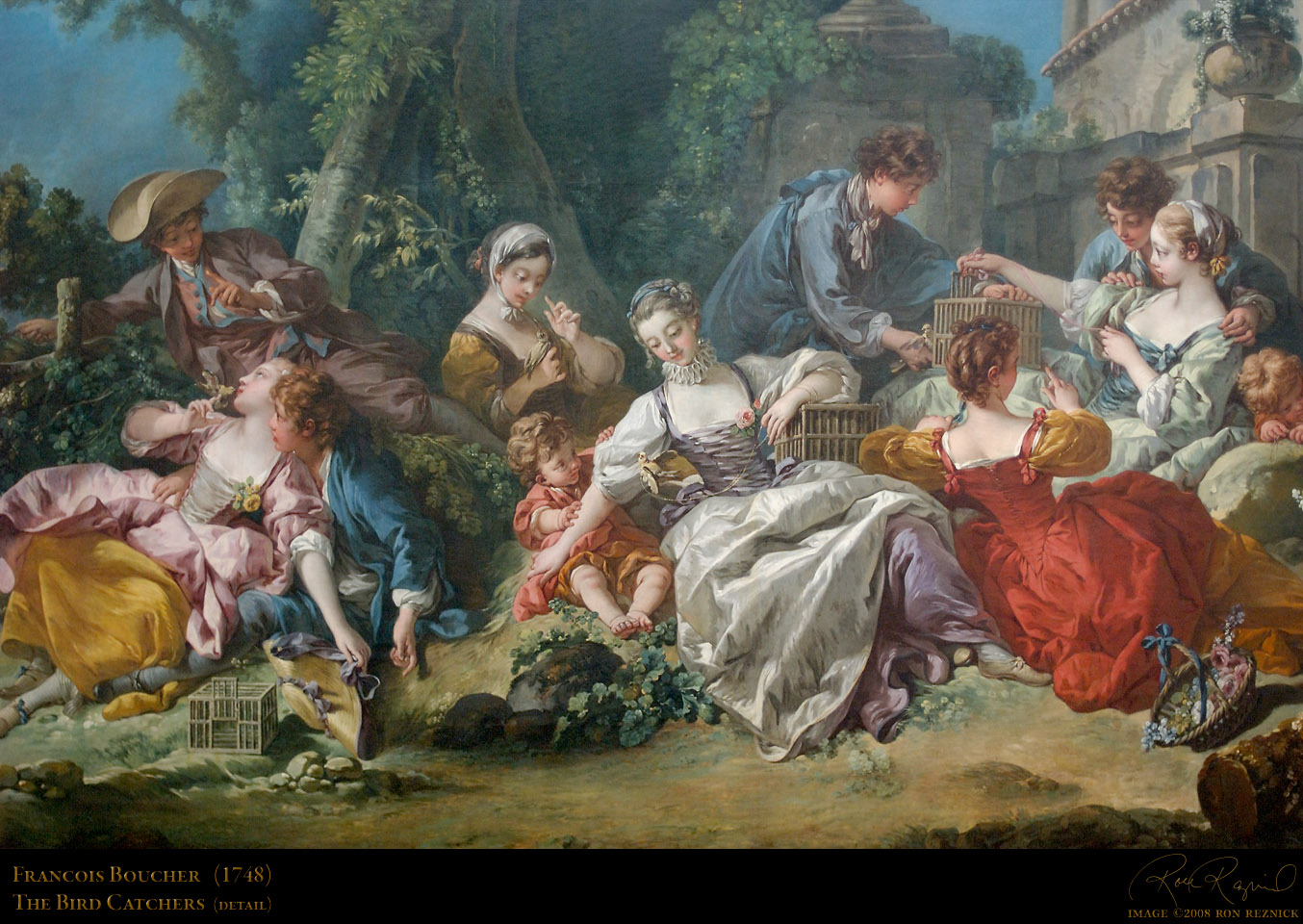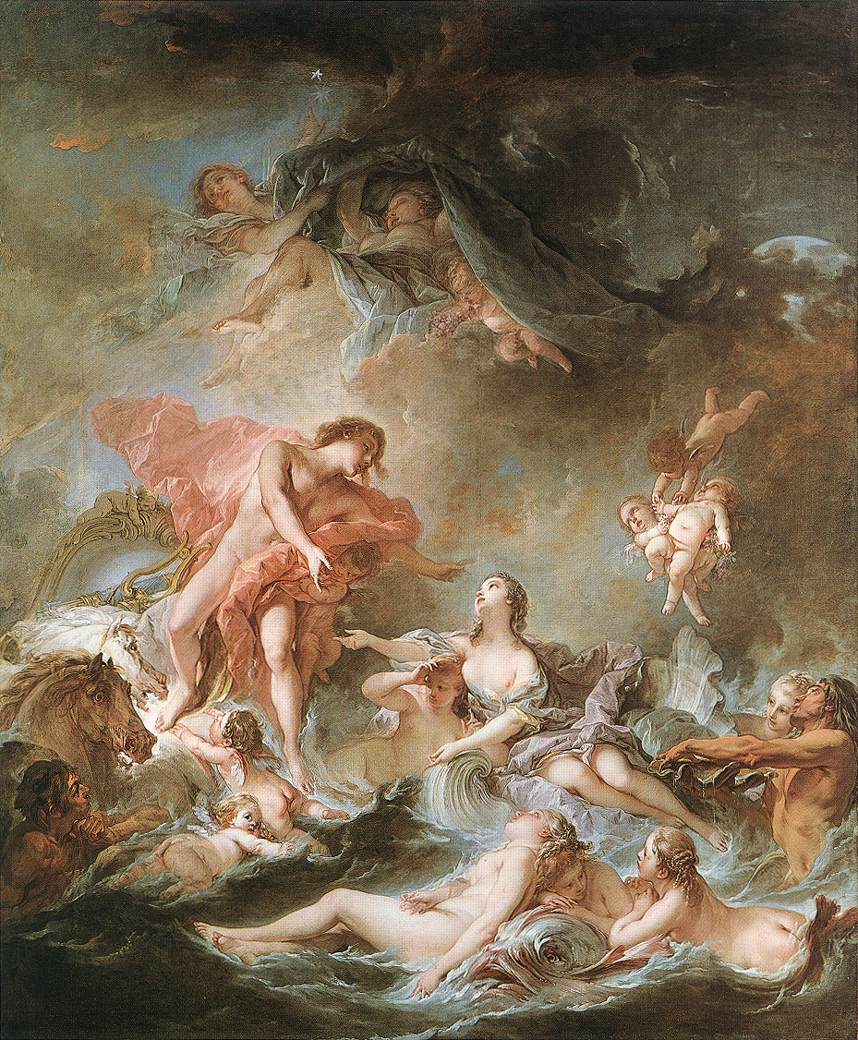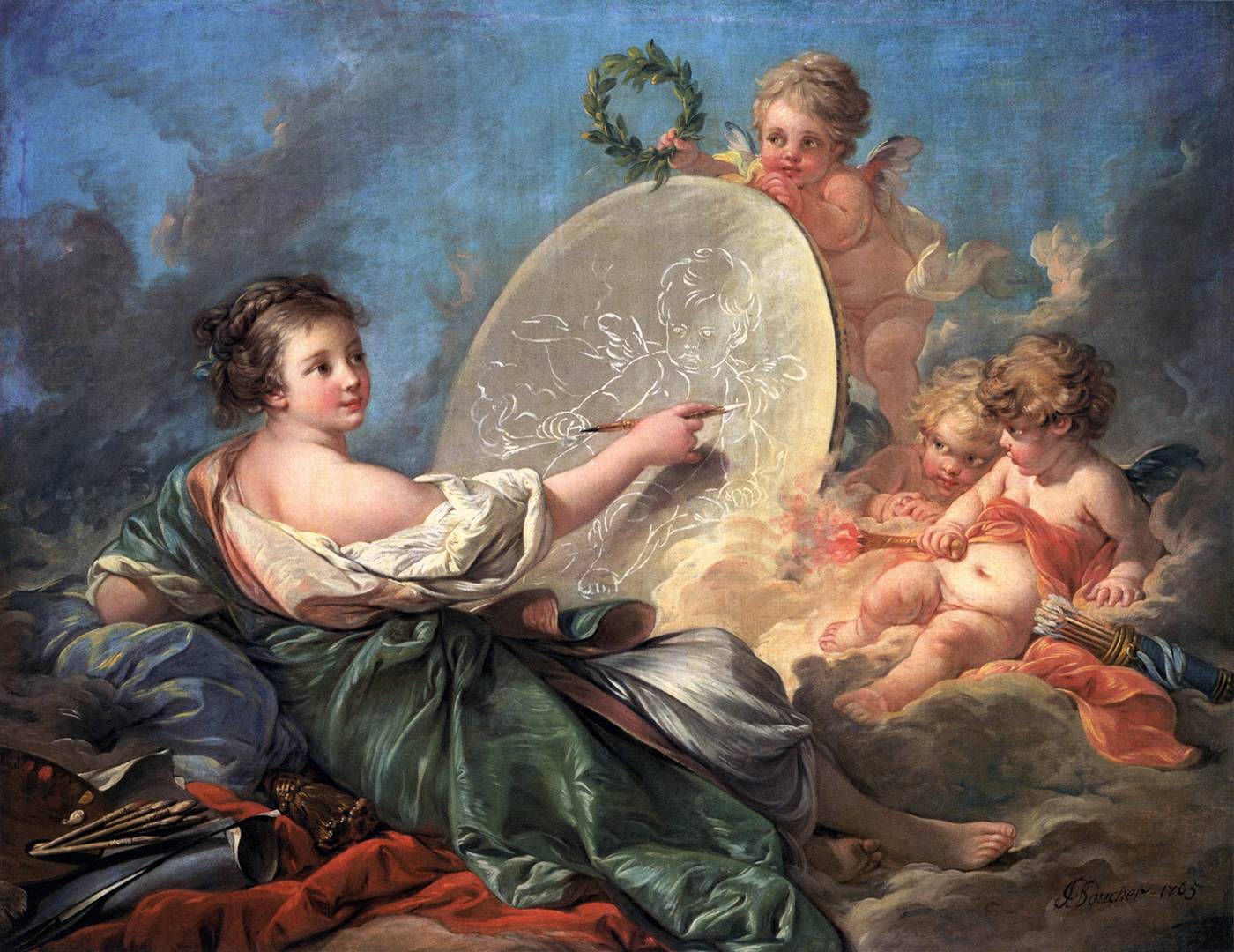French Painters: François BOUCHER
*
François Boucher (29 September 1703 – 30 May 1770) was a French painter, a proponent of Rococo taste, known for his idyllic and voluptuous paintings on classical themes, decorative allegories representing the arts or pastoral occupations, intended as a sort of two-dimensional furniture.
*Born in Paris, the son of a lace designer Nicolas Boucher, François Boucher was perhaps the most celebrated decorative artist of the 18th century, with most of his work reflecting the Rococo style. At the young age of 17, Boucher was apprenticed by his father to François Lemoyne, but after only three months he went to work for the engraver Jean-François Cars. Within three years Boucher had already won the elite Grand Prix de Rome, although he did not take up the consequential opportunity to study in Italy until four years later. On his return from studying in Italy in 1731, he was admitted to the Académie de peinture et de sculpture as a historical painter, and became a faculty member in 1734.
His career accelerated from this point, as he advanced from professor to Rector of the Academy, becoming head of the Royal Gobelins Manufactory in 1755 and finally Premier Peintre du Roi (First Painter of the King) in 1765.Reflecting inspiration gained from the artists Watteau and Rubens, Boucher's early work celebrates the idyllic and tranquil, portraying nature and landscape with great élan. However, his art typically forgoes traditional rural innocence to portray scenes with a definitive style of eroticism, and his mythological scenes are passionate and intimately amorous rather than traditionally epic. Marquise de Pompadour (mistress of King Louis XV), whose name became synonymous with Rococo art, was a great fan of Boucher's, and had the painter under her protection: it is particularly in his portraits of her that this style is clearly exemplified.Paintings such as The Breakfast of 1739, a family scene, also show Boucher as a master of the genre scene, as he regularly used his own wife and family as models. These intimate family scenes are, however, in contrast to the 'licentious' style, as seen in his Odalisque portraits. The dark-haired version of the Odalisque portraits prompted claims by Diderot that Boucher was "prostituting his own wife", and the Blonde Odalisque was a portrait that illustrated the extramarital relationships of the King. Boucher gained lasting notoriety through such private commissions for wealthy collectors and, after the ever-moral Diderot expressed his disapproval, his reputation came under increasing critical attack during the last of his creative years.Boucher is famous for saying that nature is "trop verte et mal éclairée" (too green and badly lit).Francois Boucher died on 30 May 1770 in Paris. His name, along with that of his patron Madame de Pompadour, had become synonymous with the French Rococo style, leading the Goncourt brothers to write: "Boucher is one of those men who represent the taste of a century, who express, personify and embody it."
- 1730s -Crossing the Bridge*Crossing the Ford
*- 1732 -Venus Demanding Arms from Vulcan for Aeneas
*- 1734 -The Rape of Europa
*- 1737 -The Rest on the Flight into Egypt
*- 1738 -Seated Nude
*- 1739 -The Birth of Venus
*- 1741 -Leda and the Swan
*- 1742 -La Toilette*The Education of Cupid
*Diana Resting after her Bath
*Diana Resting after her Bath (Detail)
*Chinese Dance
*La Pêche Chinoise
*- 1743 -- 1745 -- 1747 -Are They Thinking About the Grape?
*The Forest*The Rape of Europa*- 1748 -The Bird Catchers
*The Fountain of Love (Detail)
*- 1749 -A Summer Pastoral
*An Autumn Pastoral
*An Autumn Pastoral (Detail)
*- 1750 -Adoration of the Shepherds
*The Love Letter*The Interrupted Sleep*Apollo Revealing his Divinity before the Shepherdess Isse
*Madame de Pompadour, la Main sur le Clavier du Clavecin
*The Mill at Charenton
*The Toilet of Venus*Venus Consoling Love
*The Rising of the Sun*- 1754 -The Visit of Venus to Vulcan
*
- 1755 -
Winter
*
- 1756 -Jeune Fille Tenant une Corbeille de Fleurs
*- 1757 -Vulcan Presenting Venus with Arms for Aeneas
*Marquise de Pompadour*Marquise de Pompadour
*
Marquise de Pompadour at the Toilet-Table
*
- 1759 -Marquise de Pompadour
*Pan and Syrinx
*Jupiter in the Guise of Diana, and the Nymph Callisto
*
- 1760 -Allegory of Painting
*Young Woman Sleeping
*
-1761 -Shepherd and Shepherdess Reposing
*
- 1762 -
Pan and Syrinx
*
- 1763 -Dreaming Shepherdess
*Vertumne et Pomone
*- 1764 -- 1765 -Allegory of Painting
*
Virgin and Child with the Young Saint John the Baptist and Angels
*The Dispatch of the Messenger
*
- 1766 -Madame Bergeret
*
- 1768 -Cueillette des Cerises
*
- 1770 -Virgin and Child
*
- Undated -The Enchanted Home : A Pastoral Landscape Surmounted by Cupid
*Lady with an Umbrella
*












































































Комментариев нет:
Отправить комментарий